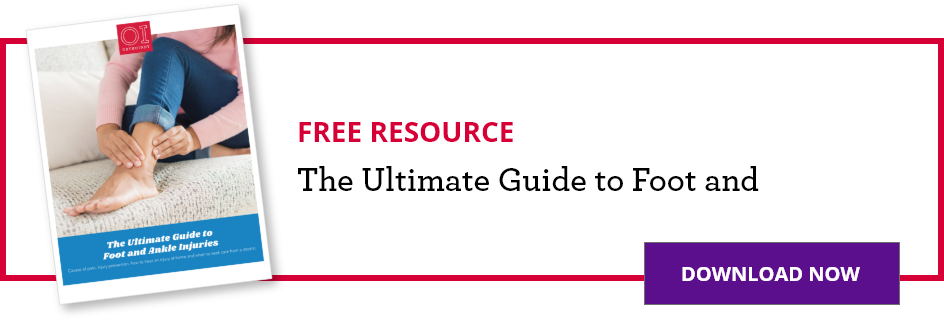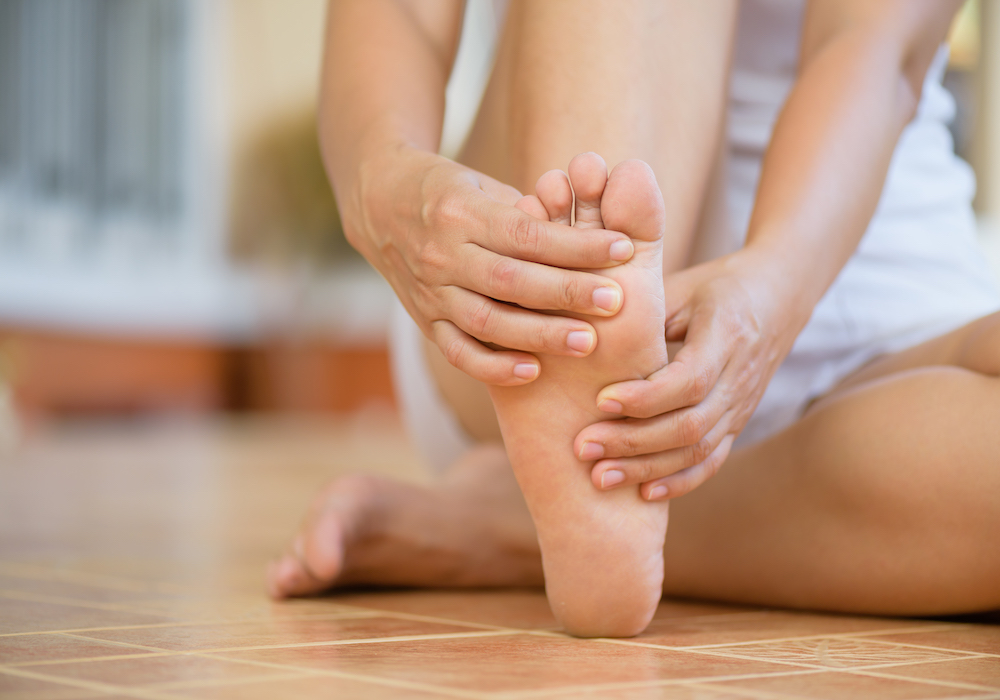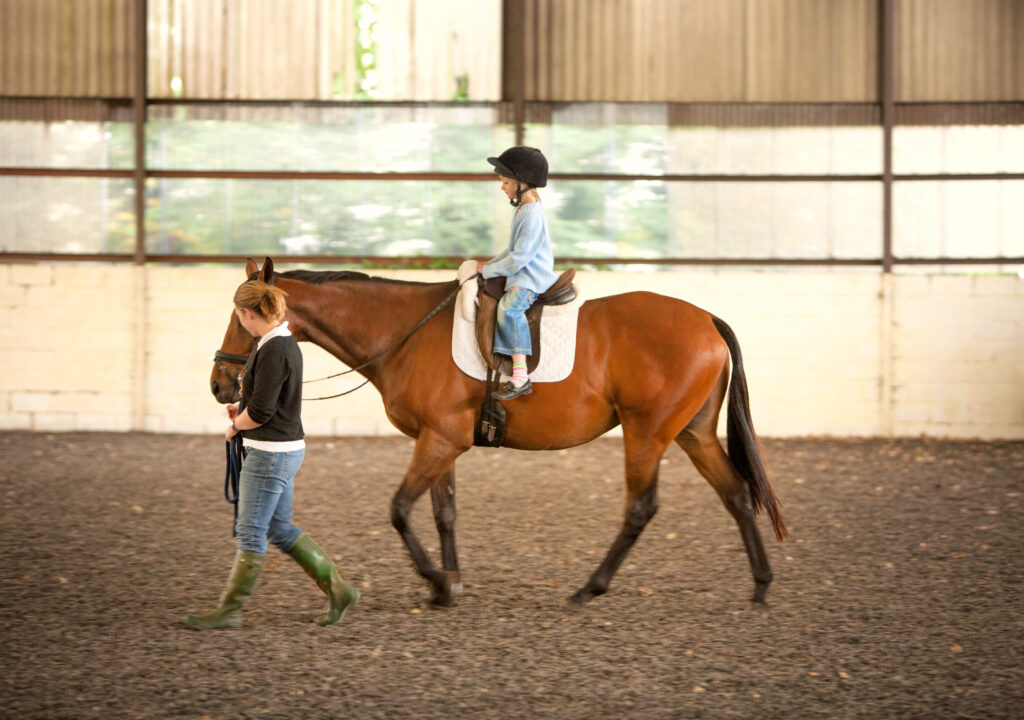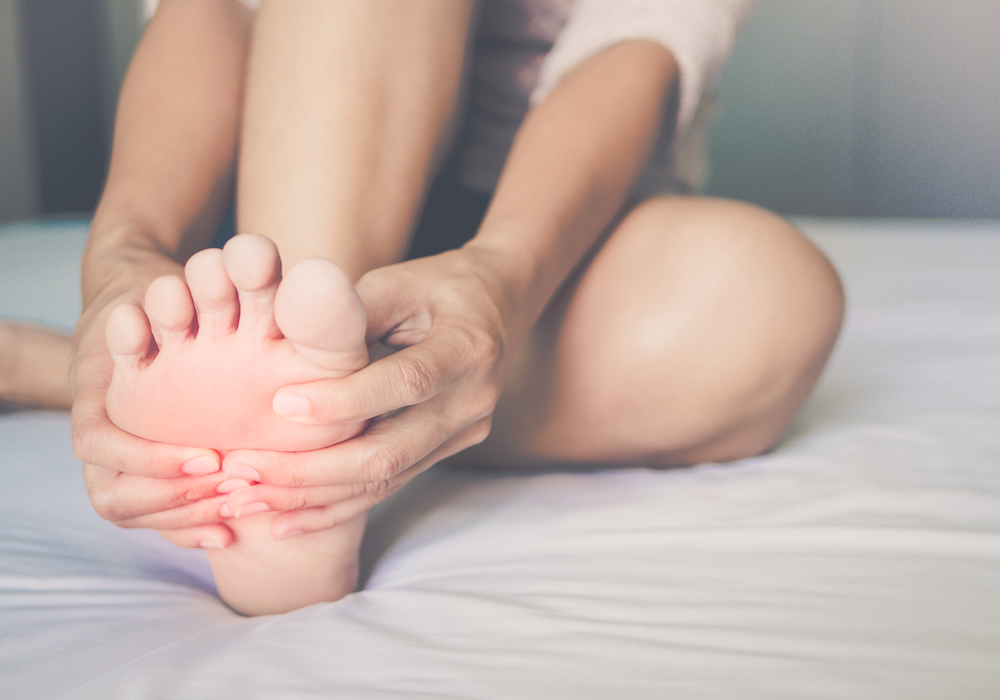THIS IS PART OF THE ULTIMATE GUIDE TO FOOT AND ANKLE INJURIES
If you are experiencing pain on the bottom of your foot, you may have irritated your plantar fascia. Your foot and ankle doctor will be able to diagnose this condition, known as plantar fasciitis.
Treatment ranges from rest to orthopedic shoes, but home remedies are also popular.
The OrthoIndy Physical Therapy team suggests eight exercises you can do with household objects to decrease your plantar fasciitis irritation and inflammation.
What is plantar fasciitis?
Plantar fasciitis occurs when the strong band of tissue that supports the arch of the foot becomes irritated and inflamed. This condition is usually the most common cause of pain on the bottom of your foot.
OrthoIndy foot and ankle doctor, Dr. Daniel Lehman says pain usually develops when there is too much pressure on the bottom of the foot, causing a tear or damage to your plantar fascia.
“Most likely the damage is due to some combination of overuse in patients who are predisposed to irritation of their plantar fascia and a tight Achilles tendon,” Dr. Lehman said.
If you experience pain on the bottom of your foot in the morning or after exercise, it’s important to seek treatment. It is time to get your normal back.
How to Treat Plantar Fasciitis
Plantar fasciitis treatment is nonsurgical for the first 12 months. If nonsurgical treatment is not effective, surgical treatment may be considered, although it’s extremely rare.
Nonsurgical plantar fasciitis treatment includes:
- Rest
- Ice
- Plantar fasciitis exercises
- Orthotics and shoe inserts
- Cortisone injections
- Plantar fasciitis physical therapy
- Anti-inflammatory medication like ibuprofen

Plantar Fasciitis Home Treatment
If you have plantar fasciitis, home remedies may help your foot pain by stretching the muscles surrounding the plantar fascia, and the plantar fascia itself. By stretching these muscles, you’re increasing flexibility and promoting movement to reduce inflammation.
Eight effective home remedies for plantar fasciitis pain include:
- Calf stretching: Place your hands flat on a wall and straighten the affected leg. Bend your opposite knee forward, keeping both feet on the ground and leaning forward, toward the wall. Hold for 10 to 15 seconds and repeat three times.
- Rolling stretch: Roll a frozen water bottle, golf ball or rolling pin under the arch of your foot for two to three minutes to loosen your plantar fascia then rest and repeat.
- Foot flexes: Sit on the floor with your legs straight and wrap an elastic band around the bottom of your foot. Hold the other end with both hands and pull your toes away from your body and repeat.
- Heel raises: Stand near a counter or railing for support and gently raise onto your toes and back down until your feet and calves are tired.
- Towel curls: Sit in a chair and place your injured foot in the middle of a towel. Move your toes back and forth to try and scrunch the towel toward you.
- Marble pickups: Sit in a chair with your feet flat on the floor and place a bowl of 20 marbles on the ground. Try to pick each marble up with your toes and continue until you’ve picked up all 20 marbles.
- Massage: Gently rub the arch of your foot around the injured area to alleviate pain.
- Use toe separators: When your toes are in separators, it elongates your tendons, causing a good stretch.
Running and speed walking can aggravate the plantar fascia. Instead, try low-impact exercises such as biking, yoga or swimming. Always remember to stretch before you exercise to decrease your pain.
Proper Plantar Fasciitis Footwear
Even if the home remedies are working, it’s important for your foot to have support while you walk, run or put weight on it. Supportive shoes or insoles are crucial to reducing and eventually eliminating your plantar fasciitis pain.
Download the Guide to Shoe Buying.
Some things to consider when buying shoes or insoles include:
- Firm heel counter
- Rigid sole
- Soft ground impact
- Extra arch and heel support
- Cushioning in your midfoot
Every foot is different, so your foot and ankle doctor may not suggest a specific brand or shoe. A common suggestion is making an appointment at a local shoe store to get fitted for the best walking shoes for plantar fasciitis.
Night splints are also recommended by most physicians. They are a soft sock like sleeve for your foot and ankle that keep your foot straight while you sleep. A band stretches from the top of your ankle to your toe to keep it straight. Night splints are beneficial because they act as a constant stretch, so your foot isn’t as stiff and micro-tears don’t occur when you take your first steps in the morning.
Plantar Fasciitis Relief
If you don’t find relief from plantar fasciitis home remedies, exercises, shoe support or physical therapy, your foot and ankle doctor may suggest an injection.
If you are experiencing pain, don’t push through it and injure yourself further. Take a break and work with your foot and ankle doctor to find the best path toward plantar fasciitis relief.
Make an appointment with an OrthoIndy foot and ankle specialist
Schedule an appointment
Your well-being is important to us. Click the button below or call us to schedule an appointment with one of our orthopedic specialists. If your injury or condition is recent, you can walk right into one of our OrthoIndy Urgent Care locations for immediate care. For rehabilitation and physical therapy, no appointment is needed to see one of our physical therapists.





